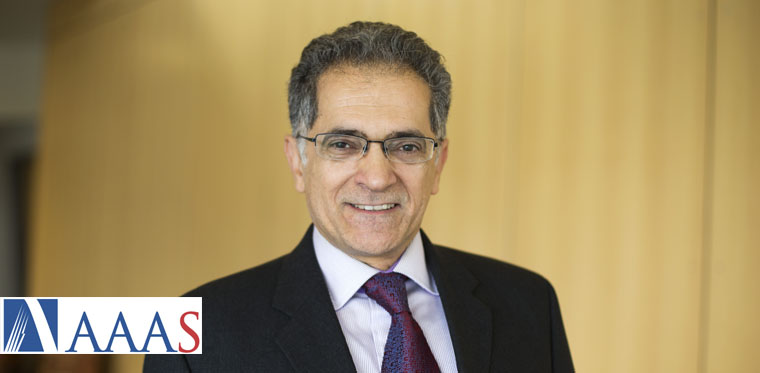Kamal Sarabandi elected Fellow of the American Association for the Advancement of Science
The AAAS seeks to advance science, engineering, and innovation throughout the world for the benefit of all people.

 Enlarge
Enlarge
Kamal Sarabandi, Rufus S. Teesdale Professor of Engineering, has been elected Fellow of the American Association for the Advancement of Science (AAAS). AAAS is the world’s largest general scientific society, and publisher of the journal Science. The AAAS seeks to advance science, engineering, and innovation throughout the world for the benefit of all people. Fellows are recognized for their “efforts toward advancing science applications that are deemed scientifically or socially distinguished.”
Kamal Sarabandi’s contributions have shaped the remote sensing radar imaging field for over the past quarter century. He is widely recognized as a leader in the development of radar remote sensing algorithms, techniques, instruments and systems for electromagnetically interrogating and characterizing complex structures.
Applications of his work range from characterizing rain forest canopies and polar ice caps, detecting buried mines, developing microwave cameras to see-through walls, and creating millimeter-wave and submillimeter-wave technology for autonomous navigation as well as miniaturized antennas for mobile wireless devices.
His pioneering work on using radar for monitoring vegetation has important implications today for scientists studying the process and effects of global warming. He has also developed a multipolarization algorithm to remotely map the moisture content of the soil surface using airborne or space-borne imaging radar. His work will provide soil maps for hydrologists.
Dr. Sarabandi has been involved in mission planning and experimentation for many of NASA’s space-borne remote sensing imaging radars including NASA’s 1994 Shuttle Imaging Radar (SIR-C), 2000 Shuttle Radar Topography Mission (SRTM), and 2015 Soil Moisture Active Passive (SMAP). The active and passive polarimetric radar calibrators and external calibration techniques developed for these missions have become the standard approach used worldwide.
His defense-related contributions include development of sensors and algorithms for space- or airborne detection of foliage-camouflaged targets and targets within buildings. His extensive activities in development of low-cost, low-power, and compact-size beam-steering radar sensor operating at 240GHz has shown significant potential for enabling autonomous navigation of small robots as well as driverless vehicles. Combining his deep and broad knowledge in remote sensing techniques, antennas, and wave propagation, he has developed a very promising subsurface sensing approach to map the extent of underground fracking regions. His research activities in exploration for and safe utilization of energy resources has led to the invention of a reliable wireless communication apparatus between the drill head deep in the borehole and surface.
Professor Sarabandi has been leading a $20 million initiative to create the Center for Objective Microelectronics and Biomimetic Advanced Technology, established in 2008. He continues to serve as director of the Center, in addition to leading the Center for Microwave Sensor Technology and the Radiation Laboratory.
Professor Sarabandi’s contributions to education have been instrumental in developing the top-ranked educational program in the field of applied electromagnetics at the University of Michigan. A popular teacher with very high teaching evaluations, he has developed many new graduate-level courses and substantially improved a number of graduate and undergraduate courses.
To date he has supervised 46 Ph.D. students with 12 now working as professors, 12 working at national research laboratories and 22 working in industry. He has also supervised 35 Masters candidates. The high quality of research conducted in Professor Sarabandi’s group has resulted in about 30 best paper awards.
Prof. Sarabandi co-founded EMAG Technologies to commercialize simulation tools for designing and understanding electromagnetic detection systems. These tools and systems are used throughout industry and government. The company has brought more than $65 million in funding to Ann Arbor.
In recognition of his seminal contributions, Professor Sarabandi has earned many awards and honors and has been serving in key leadership roles, including as a member of the NASA Advisory Council and as the current president of the IEEE Geoscience and Remote Sensing Society. An IEEE Fellow, Prof. Sarabandi is the Rufus S. Teesdale Endowed Professor of Engineering and director of the Radiation Laboratory. He holds 14 U.S. patents with 8 more pending.
 MENU
MENU 
